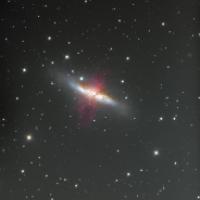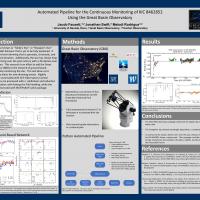Decay of a Black Hole
Monitoring the Optical Decay of a Black Hole X-ray Binary using the Great Basin Observatory
Binary systems are systems in which two or more objects interact and orbit around a common center of mass. The primary object, typically the more massive object in the system, is most commonly a star but has also observed to be a white dwarf, neutron star, or black hole. The nature of the primary object influences how the objects in the binary system will interact with one another [6]. Three types of interacting binaries are detached, semi-detached, and contact and are all characterized based on how the objects evolve with respect to one another over time. In each of the interacting systems, the shape of the objects experiences distortion due to the effects of gravitational and tidal forces between the objects. This distortion is related to the relative distances of the objects and their respective radii.
Low mass X-ray binary (LMXB) systems are composed of a stellar black hole and a companion star that powers the black hole by accretion. These types of systems spend a majority of the time in a state of quiescence, but have been observed to enter an outburst cycle. The LMXB binary system MAXI J1820+070 was observed as it was going through an outburst cycle beginning in the hard state and transitioning into the soft state before entering quiescence again. Observations in the optical light spectrum began towards the end of the outburst cycle in October of 2018 with the use of the Great Basin Observatory. The brightness of the system was monitored regularly to determine how the optical light emitted during the outburst changes over time which resulted in a decay timescale of 43 days. This result was compared to that of the Xray light emitted from the same source in order to better understand the complex structure of the black hole system







